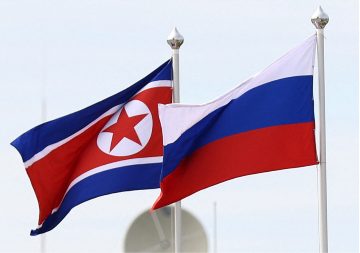
The United States (US) has dominated the international financial system since the Second World War. The US-centric financial system and Washington’s economic preponderance are significant facets of American soft power. However, the Ukraine conflict and, more recently, the US banking crisis, have made the world realise the economic and strategic disadvantages of the preeminence of the greenback. Emerging economies, such as China, the United Arab Emirates (UAE), Russia, and India, have expressed growing interest in exploring alternative reserves and digital currencies as potential diversification options. The emergence of digital currencies, such as Bitcoin and central bank digital currencies (CBDCs), has also sparked discussions about their potential role as global reserve currencies. However, it is still early to discuss the dollar’s demise as the most accepted reserve currency.
< style="color: #0069a6">The emergence of digital currencies, such as Bitcoin and central bank digital currencies (CBDCs), has also sparked discussions about their potential role as global reserve currencies.
Challenging the US dollar's hegemony is a multifaceted process involving economic, financial, political, and geopolitical factors. The dollar’s pre-eminence provides the US with significant economic leverage. Its liquidity, demand, and depth give the US Federal Reserve (Fed) considerable control over global financial flows and economic activity. The greenback provides the US with increased access to capital and reduced borrowing costs. Its economic privilege can be traced back to various economic policies, geopolitical events and elements of American hegemony.
- Geopolitical events: Wartime profiteering in the two World Wars, the Cold War, and the rapid decline of Great Britain’s dominance propelled the dollar’s importance. US arms and goods exports to allies substantially increased its trade and economy. After the war, nations facing financial difficulties started purchasing US bonds and depositing their gold with the US. The Bretton Woods system also pegged the US dollar as the global reserve currency in 1944. Under this system, countries agreed to peg their currencies to the US dollar, which was backed by gold at a fixed exchange rate, establishing the US dollar’s credibility.
- American hegemony: The US emerged as an economic powerhouse after 1945, supplemented by its industrial capacity. The US dollar became widely accepted in international trade and investment, and countries, owing to their confidence in US’ economic stability, held US dollars as reserves. The internationalisation of its financial system and the dollar’s primacy in the international market made America the largest and most liquid financial market. The size and depth of these markets provide a wide range of investment options, liquidity, and hedging instruments, which attract international investors, further supporting the use of the US dollar in global transactions.
- Economic policies: The Fed maintains a stable debt sustainability ratio and instrumentalises a tandem of open market operations, foreign exchange rate and interest rate interventions to preserve the dollar’s primacy as a global reserve currency. As more countries and entities adopted the US dollar as a global reserve currency, network effects came into play. The widespread use of the dollar has created a self-reinforcing cycle. More countries and entities were willing to hold and transact in US dollars, strengthening its status as a global reserve currency. This has created a high level of inertia in the global financial system, making it difficult for alternative currencies to gain traction.
Today, 90 percent of international trade is invoiced in dollars; the US dollar dominates global forex reserves, with 60 percent of the global reserves held in dollars. This “exorbitant privilege”, as it was termed in 1963 by the French Finance Minister Valery Giscard d'Estaing, allowed the US to invest abroad in a cost-effective manner, as the dollar’s value at home was sustained by the international economy’s hunger for the American currency. Such demand helped the US to issue bonds at a lower cost, as higher demand for a government’s bonds meant it didn’t have to pay as much interest to entice buyers. It also helped keep the cost of the US’ now substantial external debt down.
However, the emergence of currencies such as the euro, yuan, and yen has challenged the dollar’s dominance. China, especially, is using its economic clout to peg the Yuan as an international currency of preference. To that end, Beijing is instructing its banks to establish multicurrency payment mechanisms for yuan transactions by incentivising yuan-denominated BRI projects and overseas loans and by providing tax incentives through national Special Economic Zones (SEZ) (the Hainan Free Trade Port, Guangdong-Hong Kong-Macao Greater Bay Area and Shanghai International Financial Center).
< style="color: #0069a6">China has been actively promoting the yuan’s internationalisation to increase its use in global trade and investment, establish currency swap agreements with strategic partners, such as Russia and Saudi Arabia, and position the yuan as an alternative to the US dollar.
While these reserve currencies—the yuan, euro, and yen—can potentially challenge the US dollar’s hegemony, they also face several impediments.
China has been actively promoting the yuan’s internationalisation to increase its use in global trade and investment, establish currency swap agreements with strategic partners, such as Russia and Saudi Arabia, and position the yuan as an alternative to the US dollar. Additionally, Beijing is instructing its banks to establish payment mechanisms for all kinds of transactions in yuan. This has been facilitated by incentivising yuan-denominated Belt and Road Initiative projects and overseas loans, as well as by providing tax incentives through national SEZ (the Hainan Free Trade Port, Guangdong-Hong Kong-Macao Greater Bay Area and Shanghai International Financial Center).
Yet, the yuan’s rise is restricted by policies of the People’s Bank of China (PBOC), such as capital controls, fixed foreign exchange rates, and partial conversion of the Yuan in international currency markets. Additionally, there are concerns regarding transparency in the PBOC’s banking and financial records.
Furthermore, China’s shadow banking sector has wreaked havoc on the economy’s confidence, accounting for 33 percent of all capital accumulation. China’s predatory shadow banking sector has high-interest loans and lower payback timeframes. Its large share in Chinese financing leads to volatility in Chinese markets and makes up for high levels of credit risk. These issues do not institute confidence in the yuan, but rather on the contrary.
Likewise, the euro is a major challenger to the US dollar’s hegemony. However, it too, faces challenges on account of stability and cohesion in the European Economic Community due to divergent economic, monetary, and fiscal policies among member states, sovereign debt concerns, and political uncertainties.
< style="color: #0069a6">Excessive government spending and over-reliance to raise monetary sources from heavy taxation also limit the scope of international business investments in the country, thereby reducing the yen’s cash flow in the global financial system.
The Japanese yen has historically been a major global currency widely used in international trade and investment. However, Japan's economy has faced challenges recently, including prolonged deflation, an ageing population, and limited economic growth. These realities may impact the yen's ability to challenge the US dollar's hegemony on a global scale. Excessive government spending and over-reliance to raise monetary sources from heavy taxation also limit the scope of international business investments in the country, thereby reducing the yen’s cash flow in the global financial system.
The US dollar's dominance in global trade and finance is closely tied to the overall strength and stability of the US economy and financial system. At the same time, global dependencies on the US dollar have created vulnerabilities in the international financial system, exposing countries to the risks associated with US’ monetary policy and economic fluctuations.
While the greenback’s hegemonic position is still formidable, it is not invincible. Economic challenges, such as rising debt levels, trade deficits, and geopolitical tensions, could weaken its hegemony and erode its position as a global reserve currency. The rise of newer currencies, the growth of other prominent nations and growing criticism of the US dollar's privileged status raise valid concerns and highlight the need for a more multipolar global currency system that considers the evolving dynamics of the worldwide economy.
Prithvi Gupta works as a Research Assistant with the Strategic Studies Programme at the Observer Research Foundation
The views expressed above belong to the author(s). ORF research and analyses now available on Telegram! Click here to access our curated content — blogs, longforms and interviews.




 PREV
PREV


